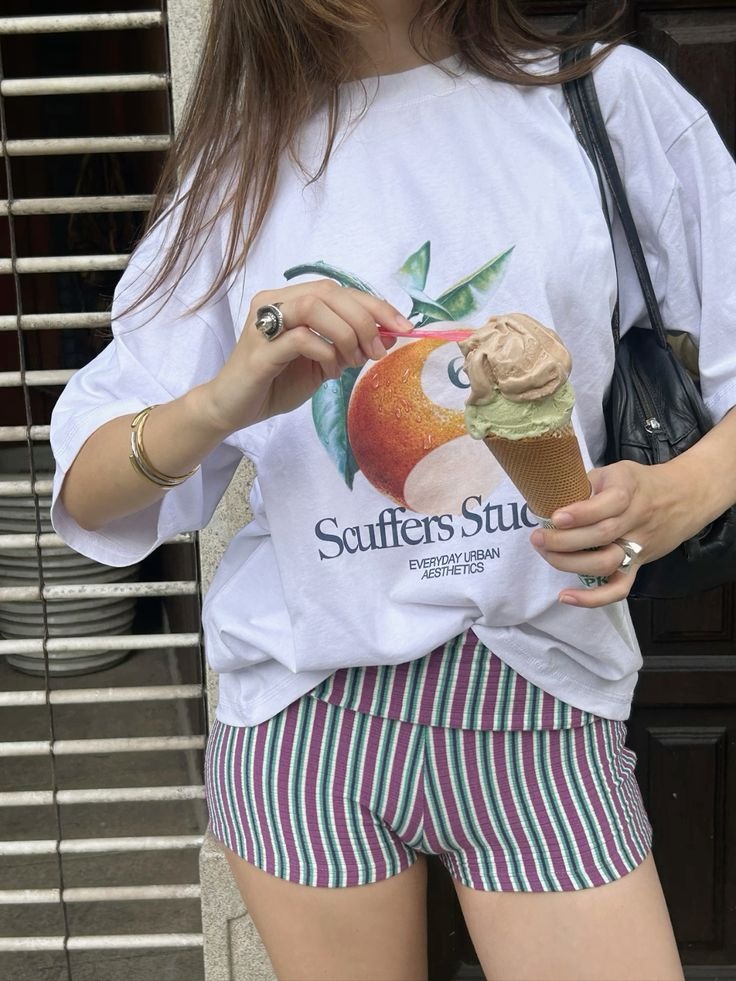Introduction
The T-shirt remains an unparalleled garment in the panorama of global apparel, serving as both a ubiquitous staple and a dynamic canvas for expression. Its story encompasses practical origins, design metamorphoses, cultural resonance, economic complexities, and pressing environmental considerations. In this extensive exploration, we delve deeper than before, expanding each facet to capture more nuance and breadth. By examining how the T-shirt reflects and shapes identities, industries, technologies, and ecological debates, we illuminate the profound significance of this deceptively simple piece of clothing. The ensuing analysis offers layered insight into historical development, material and production innovations, social functions, digital transformations, market dynamics, sustainability efforts, regional particularities, psychological underpinnings, and potential futures. This richer narrative foregrounds the T-shirt not merely as a garment but as a mirror of collective values, individual aspirations, and evolving global systems.
Historical Foundations and Early Transitions
The genesis of the T-shirt lies in shifting needs of comfort and practicality during the late nineteenth and early twentieth centuries, particularly among laborers and military personnel in warm or demanding environments. Early knitted cotton undergarments provided breathability and freedom of movement beneath heavier outerwear. Photographic records from naval contexts and colonial outposts reveal how these garments, initially concealed, began to emerge publicly during leisure or off-duty moments. The coining of the term “T-shirt” drew from the straightforward silhouette resembling the letter T, emphasizing function over fashion. As perceptions shifted, wearers recognized the merit of donning these garments as standalone tops when comfort outweighed decorum. This transition marked the first democratizing step: a shift away from restrictive menswear conventions toward relaxed attire. The gradual acceptance of the T-shirt in informal settings signaled early challenges to established dress norms and foreshadowed its eventual ubiquity.
Material Innovation and Production Evolution
In its infancy, the T-shirt was typically crafted from basic white cotton with a simple round neckline and short sleeves. Over ensuing decades, textile and manufacturing advancements introduced myriad refinements. Spun yarn technologies produced smoother, more durable cotton fabrics. Blends incorporating synthetic fibers addressed athletic demands for moisture management and stretch. Knit constructions evolved to balance weight, drape, and resilience. Dyeing methods advanced from rudimentary vat dyes to reactive and pigment dyes offering vibrant, enduring colors. Printing processes expanded from hand-stenciled motifs to screen printing and further to digital direct-to-garment techniques, enabling intricate imagery without heavy inventory commitments. Automated cutting and sewing machinery increased production efficiency, while supply chain systems adapted to just-in-time models, reducing waste from unsold stock. At the same time, small-batch and artisanal producers harnessed flexible equipment to cater to niche audiences. These layered developments underscore the T-shirt’s capacity to incorporate evolving technologies while retaining a simple foundational form.
Cultural Significance and Modes of Expression
The plain T-shirt’s blank expanse invited human creativity, transforming the garment into a medium for personal and collective narratives. Music culture leveraged T-shirts for band logos and album artwork, forging tangible bonds between artists and fans. Political movements harnessed slogan-laden shirts to broadcast demands or solidarity, turning bodies into mobile billboards in public spaces. Subcultures adopted specific stylistic modifications—distressing techniques, bespoke graphics, or unconventional cuts—to signal membership and differentiate from mainstream. Artists and designers experimented with limited-edition runs, merging wearable art with collectible status. Corporations used branded T-shirts to cultivate identity and consumer loyalty, embedding logos into everyday life. Simultaneously, individuals personalized T-shirts through tie-dye, embroidery, patches, and DIY alterations, asserting unique stories. These practices reveal how clothing becomes a form of nonverbal communication, enabling wearers to project values, affiliations, humor, or dissent. The T-shirt’s accessibility amplifies this dynamic: low cost and widespread availability allow broad participation in symbolic expression.
Role in Social Movements and Collective Action
Throughout modern history, T-shirts have become intertwined with activism and social causes. From civil rights protests to environmental campaigns, printed messages on T-shirts provided an accessible way to articulate demands and unify participants. Coordinated designs fostered a sense of belonging among protesters and created compelling visuals for media dissemination. The relative affordability of mass-produced shirts enabled grassroots organizations to mobilize supporters swiftly, distributing shirts at rallies, fundraisers, or online campaigns. Wearing a cause-driven T-shirt signalled individual commitment and invited dialogue in everyday interactions. Commemorative editions emerged to honor milestones or memorialize events, further deepening emotional resonance. In digital contexts, images of activists clad in slogan-bearing shirts circulated globally, amplifying messages beyond physical gatherings. This enduring link between T-shirts and civic engagement underscores how a simple garment can facilitate collective identity formation, awareness-raising, and solidarity-building across geographies and generations.
Fashion Integration and High-Concept Interpretations
What began as humble undergarments eventually penetrated fashion spheres, inspiring reinterpretations by designers, luxury houses, and streetwear brands. Elevated fabrics—such as premium cottons, silk blends, or specialized performance textiles—offered refined hand-feels and drape. Experimentation with silhouettes introduced oversized fits, asymmetrical hems, and novel sleeve constructions, all while preserving the T-shirt’s core comfort. Graphic elements incorporated collaborations with visual artists, designers, or cultural icons, yielding limited-edition items coveted by collectors. Embellishments like embroidery, appliqué, or laser-cut patterns blurred lines between casual wear and couture. Fashion shows contrasted T-shirts with tailored garments, demonstrating versatility and signaling shifts in dress codes toward relaxed sophistication. The high-end reinterpretations, though priced beyond average budgets, influenced mass-market adaptations as trends trickled down. Streetwear movements further spotlighted T-shirts as central pieces, often tied to hype culture and collaborations that generated scarcity-driven demand. This interplay between luxury, street culture, and mainstream retail highlights the T-shirt’s role as a flexible vehicle for aesthetic innovation and social signaling.
Economic Ecosystem and Market Dynamics
The global T-shirt market represents a significant segment of the broader apparel industry, reflecting both stability in demand and volatility from shifting trends. Large-scale manufacturers leverage economies of scale to produce vast volumes at low unit costs, often relying on international supply chains optimized for labor cost differentials. Retailers balance evergreen basics—plain, well-fitting shirts—with trend-driven graphic editions that capture fleeting consumer interests. E-commerce platforms and social media marketing enable direct-to-consumer brands to emerge rapidly, utilizing print-on-demand services to mitigate inventory risk. Collaborations between brands and influencers or cultural figures stimulate limited drops that harness scarcity psychology to drive engagement. Data analytics inform inventory planning, aiming to reduce overproduction and markdown cycles. However, external factors—economic downturns, trade policy changes, supply chain disruptions—can swiftly affect production costs, delivery timelines, and pricing strategies. In parallel, small-scale artisans and local producers experiment with niche designs or sustainable practices, appealing to conscious consumers willing to pay premiums. This heterogeneous ecosystem illustrates how the T-shirt market encompasses myriad business strategies, from cost leadership to differentiation through ethics or creativity.
Environmental Impact and Ethical Imperatives
The ubiquity of T-shirts magnifies concerns over resource consumption, waste, and labor conditions. Conventional cotton cultivation often demands substantial water and agrochemical inputs, affecting ecosystems and farmer livelihoods. Dyeing and finishing processes can release harmful effluents if untreated. Fast-fashion cycles contribute to overconsumption, yielding discarded shirts that accumulate in landfills or enter incineration streams. Labor practices in manufacturing vary widely, with some factories upholding fair wages and safe conditions, while others exploit workers in regions with limited regulatory oversight. Addressing these challenges entails multifaceted approaches: promoting organic or regenerative agriculture to reduce chemical dependency and enhance soil health; deploying waterless dyeing and closed-loop treatment systems to minimize pollution; ensuring transparent supply chains with rigorous auditing to uphold labor rights; encouraging consumer behaviors centered on durability, repair, and secondhand exchange; and innovating in recycling technologies to reclaim fibers from post-consumer textiles. Despite progress, scaling these solutions remains complex due to cost differentials, technological barriers in processing blended fabrics, and entrenched consumption patterns. The T-shirt thus epitomizes the broader apparel industry’s struggle to reconcile mass accessibility with ecological and social responsibility.
Technological Advances and Customization Frontiers
Digital and manufacturing technologies have transformed T-shirt production and personalization. Online platforms allow users to design custom graphics, choose styles, and order shirts without minimum quantities, democratizing design participation. Direct-to-garment printing offers high-resolution imagery for small runs, reducing waste associated with large inventories. Digital pattern-making and automated cutting machines enable rapid prototyping of novel silhouettes. Augmented reality tools facilitate virtual try-ons, helping consumers gauge fit and aesthetics before purchase, thereby reducing return rates and associated environmental costs. Research into smart textiles explores embedding sensors for health monitoring, temperature regulation, or interactive features, although mainstream adoption awaits advances in durability, washability, and cost reduction. Blockchain and other traceability technologies promise provenance tracking, letting consumers verify origins of fibers and labor conditions. Social media-driven crowdsourcing engages communities in co-creating designs, blurring lines between producer and consumer. These innovations illustrate how even the simplest garment interfaces with cutting-edge developments, offering potential for more sustainable, personalized, and transparent production models. The interplay of technology and T-shirt design underscores the garment’s adaptability to emerging paradigms in manufacturing and consumer engagement.
Global Contexts and Regional Particularities
While the T-shirt enjoys universal recognition, its manifestations adapt to local climates, cultures, and economies. In tropical regions, lightweight knits and loose fits predominate, often adorned with motifs reflecting indigenous art, local humor, or social commentary in native languages. In temperate or colder climates, long-sleeve variants or layering strategies incorporate heavier fabrics. Street markets and local artisans produce region-specific designs that resonate with domestic sensibilities, while digital channels enable these styles to reach international audiences. Manufacturing hubs in various countries supply both domestic demand and global export markets, with trade agreements and logistical infrastructures shaping cost structures and availability. Cultural events and festivals frequently leverage T-shirts as memorabilia, embedding local iconography to commemorate experiences. Regional initiatives sometimes experiment with local fiber sources—such as organic hemp or other suitable crops—to develop eco-friendly fabrics and nurture domestic industries. These context-driven adaptations reflect how the T-shirt functions as both a global commodity and a vessel for local identity, bridging universal utility with particular cultural expressions.
Psychological and Sociological Dimensions
Choosing to wear a particular T-shirt intersects with psychological motivations and social dynamics. Some individuals select plain, high-quality basics for comfort and ease, valuing reliability in daily routines. Others opt for graphic or slogan-bearing shirts to project values, interests, affiliations



